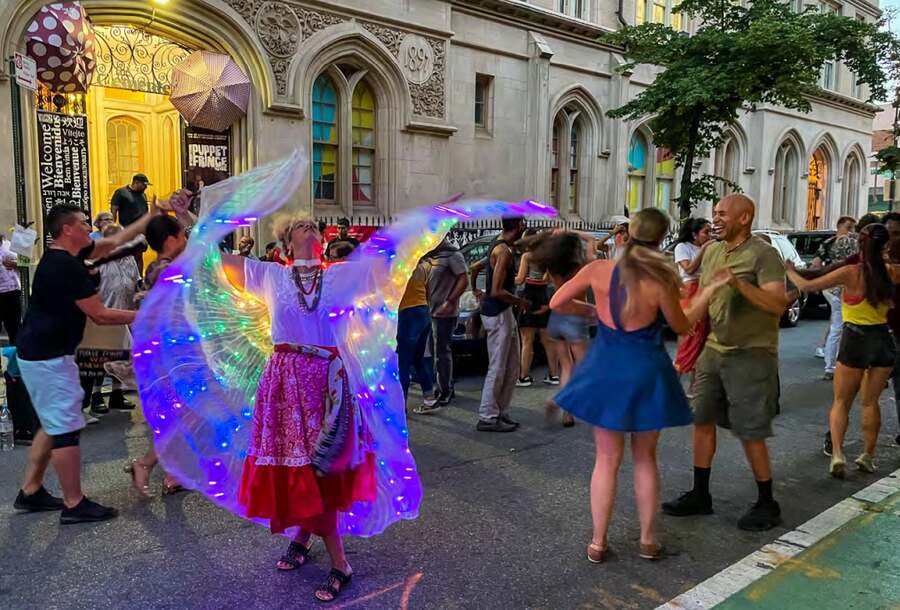DALLAS: SMU DataArts has released a new report, Federal Recovery Funds for Local Arts and Culture: Tactics from 11 Creative Communities, which examines how Local Arts Agencies (LAAs) distributed federal relief funding to arts and cultural organizations across 11 geographically diverse cities during the Covid pandemic. The insights gleaned in this analysis demonstrate the responsive and nimble ways LAAs operated throughout the pandemic, and how the common tactics related to advocacy, process, and equity that emerged across the 11 cities may hold positive implications for LAA practices moving forward.
“Times of crisis can mobilize communities to focus and act on priorities,” said Daniel Fonner, SMU DataArts’ associate director for research, in a statement. “In redistributing federal Covid-19 relief funding, these agencies prioritized equity, removing barriers to funding, and filling gaps in support and recovery opportunities locally. This report attests to the variety of ways that our local arts agencies play a key role in serving in their communities.”
For the first time since the Works Progress Administration (WPA) of the 1930s, cultural organizations were explicitly eligible for and received significant federal relief funding. Under the American Rescue Plan Act (ARPA), which was signed into law in March 2021, and the Coronavirus State and Local Fiscal Recovery Funds (SLFRF) program, the U.S. Department of the Treasury allocated funds to approximately 30,000 local and state government entities across the country for redistribution to local businesses and individuals affected by Covid. The study covers a timeframe of approximately late 2022 to 2024.
The report identifies key tactics that were commonly employed by 11 municipalities to distribute unprecedented levels of relief funding efficiently and fairly to artists and cultural organizations that are vital to the economy, civic and social engagement, and quality of life.
The 11 communities and LAAs the report studied are:
- Atlanta Mayor’s Office of Cultural Affairs
- Chicago Department of Cultural Affairs and Special Events
- Cuyahoga Arts & Culture / Assembly for the Arts (Cuyahoga County/Cleveland)
- Denver Arts & Venues
- Houston Mayor’s Office of Cultural Affairs
- Los Angeles County Department of Arts & Culture
- New York City Department of Cultural Affairs
- Phoenix Office of Arts and Culture
- Greater Pittsburgh Arts Council
- City of Seattle Office of Arts and Culture
- Regional Arts Commission of St. Louis
The 11 LAAs adopted a variety of strategies to distribute a cumulative $100 million in SLFRF funds for the arts. Several common practices emerged in three areas:
- Advocacy: LAAs advocated most effectively for federal relief funds through both grassroots efforts and partnerships across government agencies in other sectors.
- Process: Many LAAs streamlined applications and reporting requirements to deliver funds as efficiently as possible.
- Equity: Distributing funds fairly and equitably included considerations around geographic distribution and prioritizing service to the neediest communities.
The report was prepared with support from Bloomberg Associates, a philanthropic consultancy that advises cities around the world and is a part of Bloomberg Philanthropies, an organization which encompasses all of Michael R. Bloomberg’s giving and works to ensure better, longer lives for the greatest number of people.
“By allocating federal relief dollars for arts and culture, municipal leaders across the country affirmed that the sector is essential to quality of life and pandemic recovery,” said Kate D. Levin, principal for Bloomberg Associates and leader of the arts program at Bloomberg Philanthropies, in a statement. “This report highlights the effective stewardship of Local Arts Agencies across 11 cities at a time of acute crisis.”
SMU DataArts, the National Center for Arts Research, is a project of the Meadows School of the Arts at Southern Methodist University. The mission of SMU DataArts is to provide and engage both organizations and individuals with the evidence-based insights needed to collectively build strong, vibrant, and equitable arts communities. Its research efforts range from academic papers published in leading journals, applied research undertaken with community partners, and actionable insights shared directly with arts practitioners. Its programs provide business intelligence tools and resources to help arts leaders leverage data to answer critical management questions and connect research analyses to their own work. Recent publications include research reports on the scope of COVID-19 federal relief funding for the arts; emergence from the COVID-19 crisis; the alchemy that drives high performing arts organizations of color; audience diversity, equity and inclusion in large performing arts organizations; impact of investments made in diverse creative communities; and more.


